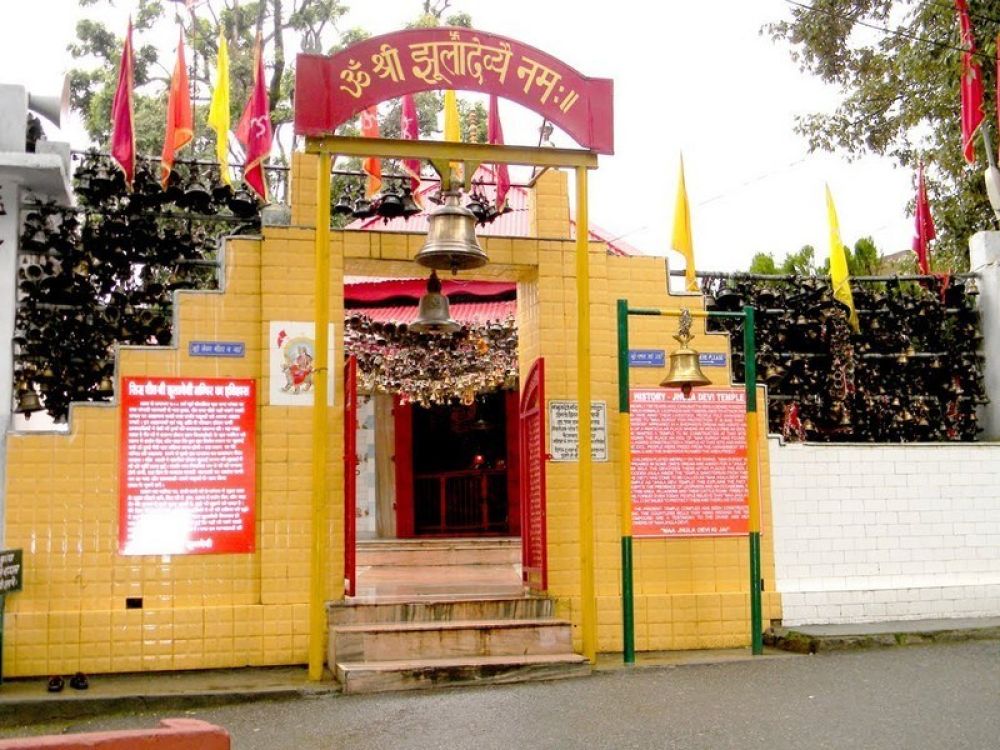

The scenic town of Ranikhet, nestled in the Kumaon hills of Uttarakhand, is known for its lush greenery, panoramic vistas, and colonial history. Amidst its natural beauty lies a revered shrine, the Jhula Devi Temple, which is a significant spiritual destination for devotees and tourists alike.
The origins of the Jhula Devi Temple are steeped in legend and local folklore. The present temple structure dates back to the 8th century, though it is believed to have been a place of worship since the Vedic times. The temple is dedicated to the Goddess Durga, revered in her form as Jhula Devi. According to the lore, the area around Ranikhet was once dense with wild animals that attacked the local villagers. In response to their fervent prayers, Goddess Durga appeared in a dream and directed them to excavate her idol. Thus, the temple was established at the site where the idol was found.
Over the centuries, the Jhula Devi Temple has been renovated and refurbished a number of times, with contributions from pilgrims and the Indian Army, which has a strong presence in Ranikhet. The temple's history has been closely tied to the growth of the town, especially during the British Raj when Ranikhet became a hill station for the British troops. Historical records and travel accounts from that era often mention the temple as a place of tranquility and spiritual solitude.
In recent years, tourism in Ranikhet and at the Jhula Devi Temple has evolved to include diverse experiences catering to spiritual, cultural, and nature enthusiasts. Visitors are drawn to the temple not only for its divine significance but also for the surrounding natural beauty. A distinctive feature of the temple is the countless bells hung by devotees as offerings, which create a melodious sound in the gentle breeze – a symbol of their prayers being answered.
Current trends in tourism at Jhula Devi Temple reflect a preference for eco-friendly and sustainable travel. Tourists are seeking authentic experiences that allow for a deeper connection with the local culture and environment. This includes participating in the temple’s rituals, exploring the nearby orchards, and even engaging with the community through village tourism initiatives.
Looking ahead, the future of tourism at Jhula Devi Temple seems promising. With increased connectivity and government initiatives to promote Uttarakhand's religious circuit, the temple is poised to welcome more visitors. Sustainable tourism practices are being encouraged to preserve the serenity and natural beauty that the temple and its surroundings are known for. The Temple Trust and local authorities are also working to enhance tourist facilities while ensuring the sacred ambiance of the site is maintained.
For travelers seeking solace, spirituality, or simply the beauty of the Himalayas, Jhula Devi Temple stands as a beacon of the rich heritage and natural splendor of Ranikhet. The temple’s history and evolving tourism landscape continue to enchant visitors, leaving a lasting impression on all who journey to this quaint hill station in Uttarakhand.